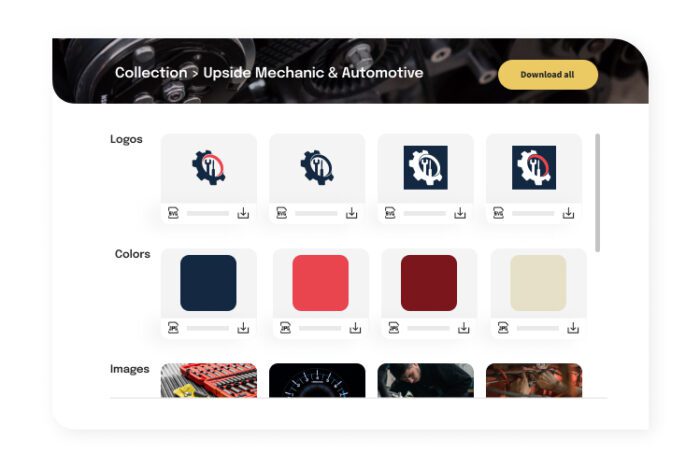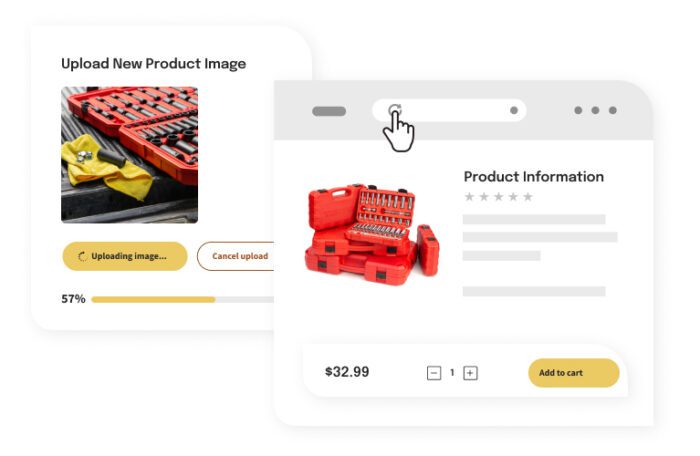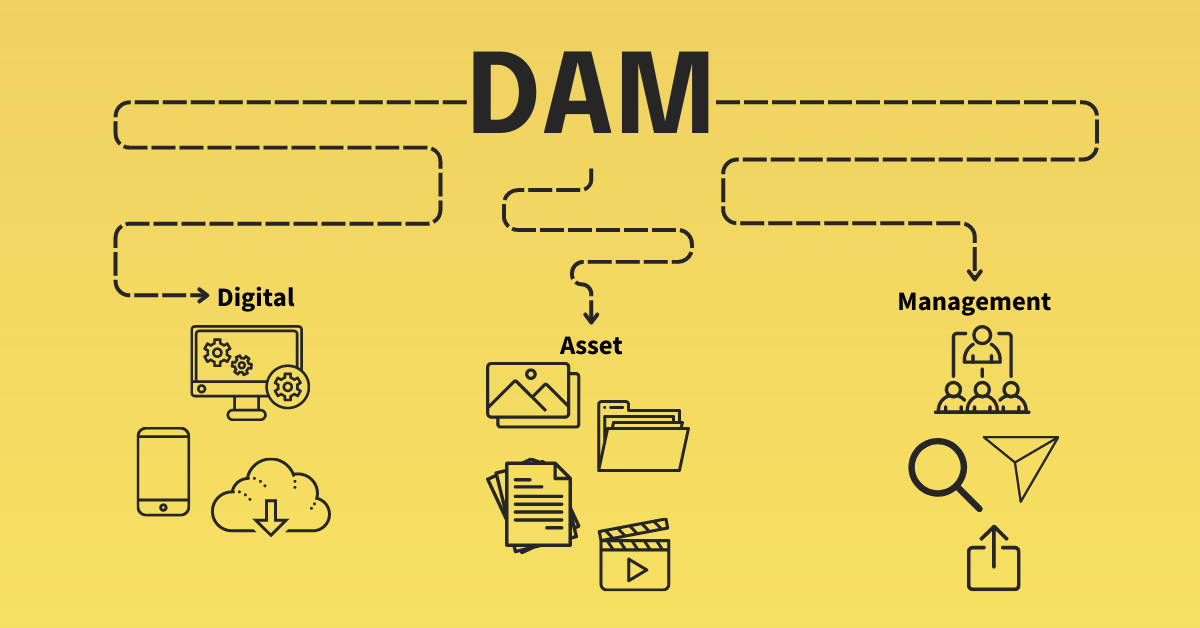Digital Asset Management & Product Information Management for Manufacturing Companies Belong Together


For manufacturing companies, getting your marketing materials and product information to your customers is essential for succeeding in an ever-growing and highly demanding market. With hundreds or thousands of SKUs, keeping digital assets and product information organized and updated across every channel is a monumental challenge. Getting it wrong can have serious consequences for the success and growth of your business.
Without the right tools, it is impossible to make consistent updates to your product information and assets across thousands of touchpoints. But every company still tries. Most try to corral this mass of information with a bunch of spreadsheets and duct-taping things together with a handful of file storage options. That never works well for long. Updates are manual and take forever, and the risks of making a mistake are sky high with data spread across tens of thousands of spreadsheet cells.
Manual data entry not only presents a significant bottleneck for business operations it also provides an increased risk of product information error opportunities. When the wrong data is loaded and shared during setup, it leads to data accuracy confusion, business disruption, and lack of trust with important customers and retailers.
Some companies try to solve these issues by adding a digital asset management (DAM) platform or a product information management (PIM) platform. A DAM is good for managing digital assets and sharing these materials internally and externally. However a DAM does not support the volume of product information that manufacturing companies are dealing with. A PIM is helpful for cataloging the full range of product data, but offers few options to Manage all of your brand’s marketing content, like product images and videos.
Having a separate DAM and PIM is like having a peanut butter sandwich and a separate jelly sandwich. Sure, they each could taste fine, but they aren’t a real PBJ. It’s in that integrated combination where the magic happens. Having a DAM and a PIM is smart, but unless they are built to work together as a fully combined solution, you’ll run into the same problems you had when only relying on one part of the whole to fix your problem.
This post covers why both a DAM and a PIM are essential for manufacturing companies, and how using them together optimizes how your team delivers your brand, protects your company from loss of materials and information, and accelerates time to market.
Digital Asset Management

Meet DAM:
DAM is short for digital asset management. DAM systems help your business centralize, organize, and deliver your brand’s digital assets and materials - items like your product images, video files, spreadsheets, documents, presentations, design and packaging files. Even large photos or videos that would otherwise bounce back to your inbox or be a challenge to share are easily deliverable with the click of a button.
How Manufacturing Companies Utilize a DAM:
Manufacturing companies need to manage large product catalogs with an ever growing volume of product assets and documents. With such a high volume of materials required, collating data becomes a cumbersome process, and managing their distribution becomes slow at best and a complete nightmare at worst.
Manufacturing companies rely on a DAM to help juggle this ever growing volume of content. The DAM serves as a single source of truth for all content and makes it easy for the correct person or partner to connect with the materials they need, whenever it’s needed.
With a DAM, manufacturing teams have constant access to up-to-date, approved content. With all of the latest brand material managed in one place, your brand looks great, everywhere and every time.
Product Information Management

Meet a PIM:
A PIM is short for product information management. A PIM gives your brand one easy platform to manage all of your brand’s product content and information and deliver it quickly and accurately everywhere your customers buy.
How Manufacturing Companies Utilize a PIM:
Manufacturing companies rely on a PIM to manage all product information. For every product you add to your portfolio comes an ever growing collection of essential data and product information that needs to be tracked alongside that item. Data like the product SKU, UPC code, description, case pack, pallet count, product colors, and all of the other varying identifying information needed to help bring these items to market. This information helps retailers set up new products and ensures your customers connect with the correct item that they need.
In addition to being a single source of truth for all product information, a PIM also makes it easy to structure your data for export to different channels. Wherever you need to deliver a custom collection of product information to a new ecommerce platform your team can quickly assemble the products, and corresponding product information, and deliver it to your customers. With a PIM you gain information accuracy, team acceleration, and an overall improved brand experience.
The Limitations
A DAM is Not a PIM:
Some manufacturing companies try to use a DAM like a PIM by loading and tagging assets with as much product data as they can fit within the description fields and metadata available. This metadata gives context to every item stored in the DAM. However, the structure of that metadata and the exporting tools in a DAM are not built in a way that is useful for manufacturing retailers to receive.
To try and force the DAM to work like PIM requires loads of manual time and extra effort. Unlike a DAM, a PIM offers a clear way to organize all of the product information for every item and store/retailer so it’s ready for delivery.
A PIM is Not a DAM:
A PIM is essential for manufacturing companies who need to manage a high volume of different products and are continually sharing product information to a growing network of retailers. However, a PIM is not a DAM, and while a PIM offers significant benefits, it does not offer a way for your brand to manage the volume of content assets and brand materials that your business has to manage.
Think of all the other visual assets, documents, packaging files, and other key content assets required to keep business running smoothly. A DAM platform serves as a universal hub for all content helping your team to assemble, organize, and deliver materials wherever they need to go.
Pairing a DAM and PIM
Having both a DAM and a PIM lets companies accomplish what they want to do in terms of managing and delivering content and product information. But, unless they are truly seamlessly integrated, then those benefits won't be fully realized. It will still take lots of manual work, significant technological customizations/integrations, and financial resources to make it work. You can spend money for individual accounts, and still have to spend hundreds of thousands more to make them work well together. And most brands don’t have the time or financial resources for that.
With two separate systems, it’s easy for silos around content and product information to occur which generates a lack of transparency that must be addressed in other ways. A truly combined system accomplishes what companies want and breaks down these silos.
Which is why…
DAM + PIM Belong Together
It is illogical to keep a DAM and PIM separate. An overloaded and complex DAM won’t solve the problem of managing the vast volume of product information and materials. And an overloaded, complex PIM with no way to manage the specific digital assets will either. A unified and streamlined system is best, which is why DAM & PIM for manufacturing companies belong together.
We call it Marketing Delivery.
Here at Image Relay, we’ve seen and experienced the challenges marketing teams at manufacturers have faced for years. So, we built a single unified platform that truly changes how you go to market. We combined the best of product information management, digital asset management, and creative operation tools all into one holistic and easy-to-use solution.
Instead of tackling an individual challenge, we built Marketing Delivery as a comprehensive solution to address how you deliver your brand across the entire marketing lifecycle.



